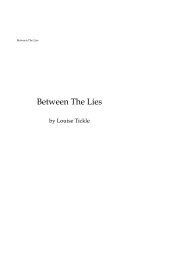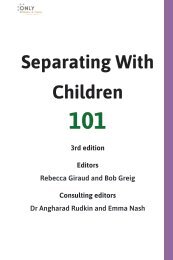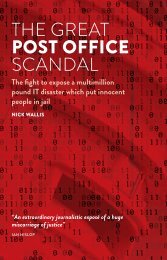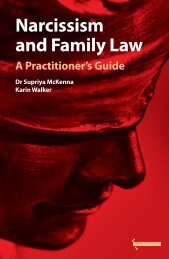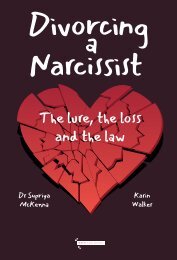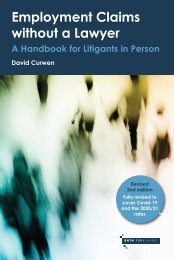The 'Secret' Family Court: Fact Or Fiction?
For approaching two decades, family courts have been accused of making life changing decisions about children and who they live with made in secret, away from the scrutiny of the public gaze. Recognising the force of these accusations, senior family courts judges have, over that time, implemented a raft of rule changes, pilot projects and judicial guidance aimed at making the family justice more accountable and transparent. But has any progress been made? Are there still suspicions that family judges make irrevocable, unaccountable decisions in private hearings? And if so, are those suspicions justified and what can be done to dispel them? In this important and timely new book, Clifford Bellamy, a recently retired family judge who has been at the sharp end of family justice during all these changes, attempts to answer those questions and more. He has spoken to leading journalists, judges and academic researchers to find out what the obstacles to open reporting are – be they legal, economic or cultural - and interweaves their insights with informed analysis on how the laws regulating family court reporting operate. Along the way he provides a comprehensive review of the raft of initiatives he has seen come and go, summarises the position now and uses this experience to suggest how this fundamental aspect of our justice system could adapt in the face of this criticism. Every professional working in the family justice system – lawyers, social workers, court staff and judges - as well as those who job it is to report on legal affairs, should read this informative, nuanced exposition of what open justice means and why it matters so much to those whose lives are upended by the family justice system.
For approaching two decades, family courts have been accused of making life changing decisions about children and who they live with made in secret, away from the scrutiny of the public gaze. Recognising the force of these accusations, senior family courts judges have, over that time, implemented a raft of rule changes, pilot projects and judicial guidance aimed at making the family justice more accountable and transparent.
But has any progress been made? Are there still suspicions that family judges make irrevocable, unaccountable decisions in private hearings? And if so, are those suspicions justified and what can be done to dispel them?
In this important and timely new book, Clifford Bellamy, a recently retired family judge who has been at the sharp end of family justice during all these changes, attempts to answer those questions and more. He has spoken to leading journalists, judges and academic researchers to find out what the obstacles to open reporting are – be they legal, economic or cultural - and interweaves their insights with informed analysis on how the laws regulating family court reporting operate. Along the way he provides a comprehensive review of the raft of initiatives he has seen come and go, summarises the position now and uses this experience to suggest how this fundamental aspect of our justice system could adapt in the face of this criticism.
Every professional working in the family justice system – lawyers, social workers, court staff and judges - as well as those who job it is to report on legal affairs, should read this informative, nuanced exposition of what open justice means and why it matters so much to those whose lives are upended by the family justice system.
You also want an ePaper? Increase the reach of your titles
YUMPU automatically turns print PDFs into web optimized ePapers that Google loves.
Foreword<br />
His Honour Clifford Bellamy was, until his recent retirement, a distinguished<br />
Designated <strong>Family</strong> Judge on the Midland Circuit, and a judge notable<br />
for his intellectual curiosity and thoughtfulness as well as his formidable<br />
industry. He was also an ardent practitioner of transparency in the<br />
<strong>Family</strong> <strong>Court</strong>, for, although he is too modest to say so, he heads the list of<br />
Circuit Judges as the most prolific publisher of judgments on Bailii.<br />
Now, from his active retirement, he has given us as the matured autumnal<br />
fruits of his time on the Bench. We are indeed lucky, for he has given us an<br />
extended but incisive meditation on one of the most pressing issues which<br />
the family justice system currently faces: transparency.<br />
Our author tells us that this is not intended to be a text book. Modestly, he<br />
describes his objectives as more limited: “to undertake a critical review of the<br />
attempts that have taken place to try to improve transparency in the <strong>Family</strong> <strong>Court</strong><br />
over the last 15 years, to try to explain why those attempts have either failed or have<br />
not been as successful as was hoped, and to make suggestions about a way forward.”<br />
That is an important task, in which he triumphantly succeeds, made all the<br />
more useful because it is, as he tells us, written from the perspective of a<br />
Circuit Judge. His treatment of these undoubtedly controversial topics is,<br />
throughout, as one would expect of our author, insightful, fair, balanced<br />
and judicious.<br />
He highlights the “very deep fault line” between supporters and opponents of<br />
greater transparency. “On one side of the divide there are those who believe that<br />
the transparency agenda has not gone far enough and that more needs to be done to<br />
open up the <strong>Family</strong> <strong>Court</strong>. On the other side of the divide there are those who believe<br />
that the transparency agenda has already been pushed too far.” Indeed.<br />
His conclusion is clear: “In my opinion it is no longer credible to seek to argue that<br />
open justice in the <strong>Family</strong> <strong>Court</strong> must be sacrificed on the high alter of guaranteed<br />
absolute privacy for children in order to ensure that justice is done. A more proportionate<br />
and balanced approach is required.” In this he reiterates the orthodox<br />
view, surely correct, that in the context of transparency the child’s welfare<br />
is not the court’s paramount consideration.<br />
Very usefully, he covers both the views of the Academy, where his analysis<br />
is both penetrating and, on some aspects, justly critical, and the experience<br />
in a number of other common law jurisdictions, both in this country and<br />
further abroad. In relation to this he makes the important point that: “none<br />
of these different models has been so convincing that other countries have been queu-<br />
xi



